Noise pollution generated by building ventilation systems, generator room vents, and pump room ventilation is a growing concern in modern construction. This issue is particularly significant in environments such as industrial buildings, hotels, hospitals, and educational facilities, where both occupant comfort and regulatory compliance are critical.
Where Is This Noise Most Common?
Commercial and Educational Buildings – Offices, classrooms, and public spaces can be impacted by noise from HVAC and ventilation systems, influencing productivity and learning outcomes.
Industrial Buildings – Mechanical ventilation, generator rooms, and pump rooms are major sources of noise, especially when located near sensitive areas or property boundaries.
Hotels and Hospitals – Guest rooms and patient areas are vulnerable to noise from ventilation and mechanical systems, affecting sleep, recovery, and overall satisfaction (6).
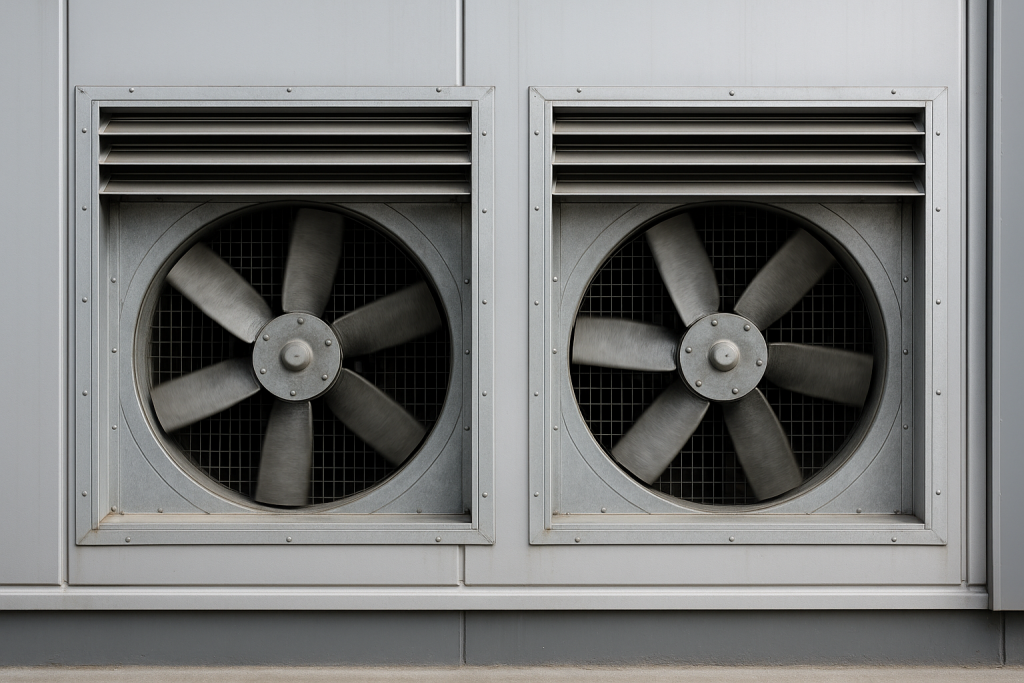
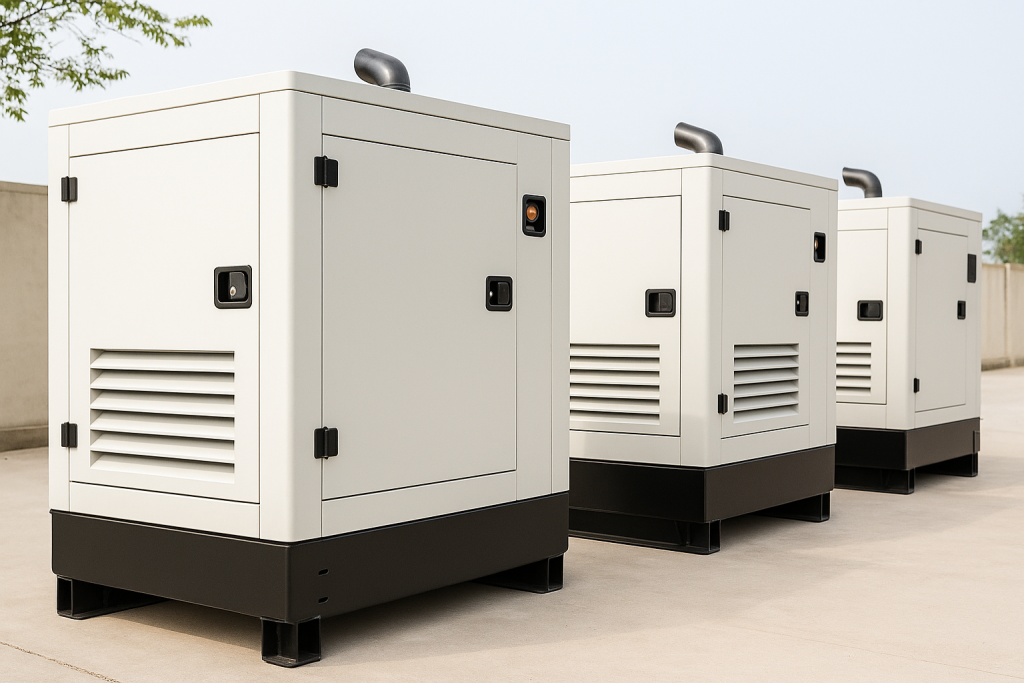
Why Is This a Problem?
Modern mechanical ventilation systems, while essential for air quality and temperature control, can introduce significant noise into indoor and outdoor environments. Field studies have shown that noise from ventilation grilles, regulating devices, and mechanical equipment can exceed recommended sound pressure levels, particularly in the low- and mid-frequency ranges (5)(6). Inadequate noise control can lead to:
- Disrupted sleep, reduced concentration, and increased stress for occupants and neighbors
- Negative health outcomes, including cardiovascular and psychological effects
- Increased complaints, regulatory challenges, and reputational risk for building owners



The Science Behind Noise Control in Ventilation
Ventilation openings—such as those for generator rooms, pump rooms, and cross-ventilated barrier walls—are necessary for airflow but can be weak points for noise ingress and egress. Research highlights that while natural ventilation is energy-efficient, untreated openings can reduce a building’s sound insulation by more than 15 dB(A), allowing external or internal noise to propagate freely (1)(7). For mechanical ventilation systems, noise from regulating devices and airflow turbulence can be transmitted through ducts and vents, further amplifying the problem (5).
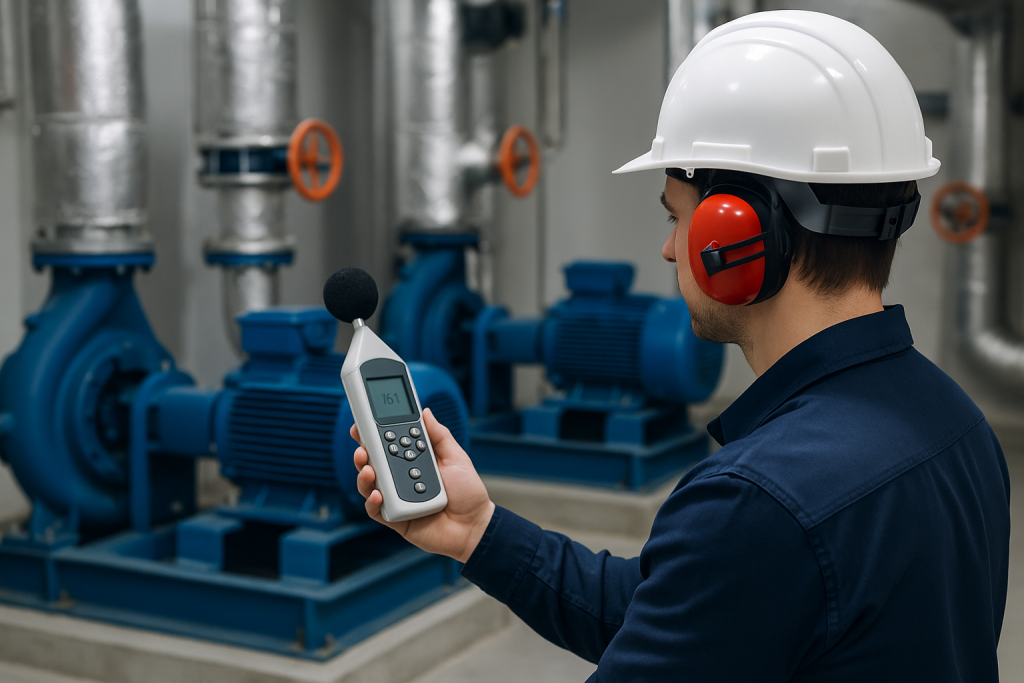
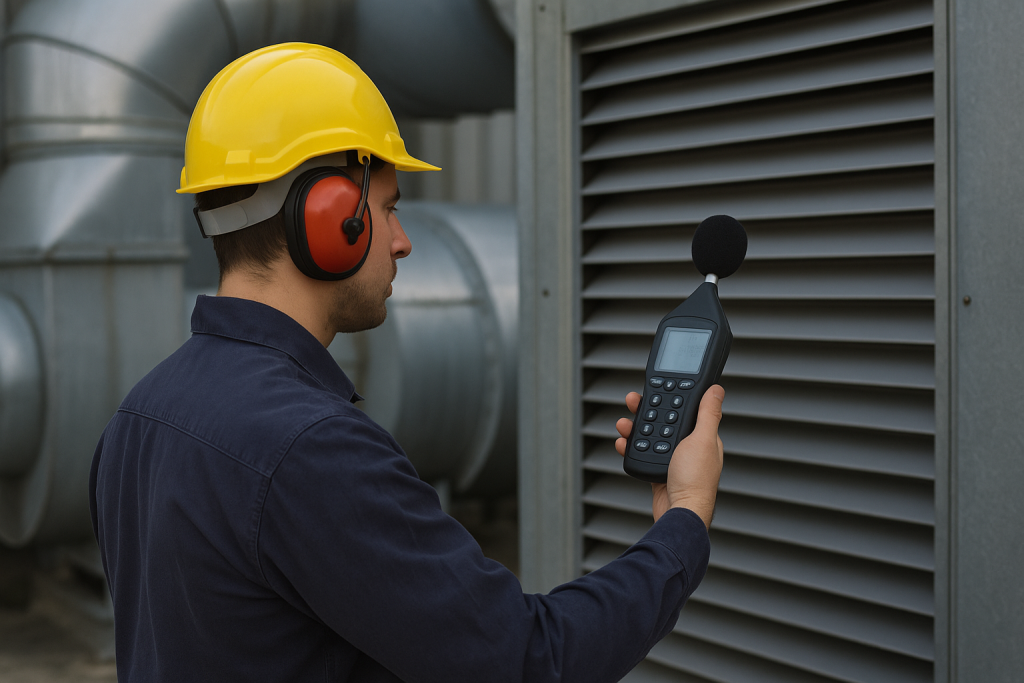
The Solution: Acoustic Louvers
Acoustic louvers are engineered devices designed to allow necessary airflow while significantly reducing noise transmission through ventilation openings. Peer-reviewed research and field studies support the use of such noise control strategies to achieve both adequate ventilation and effective sound insulation (1)(2)(7). Key benefits include:
- Maintaining airflow – Acoustic louvers are optimized to minimize resistance while providing high levels of sound attenuation (1)(7).
- Reducing noise transmission – Louvers can achieve substantial noise reduction, helping buildings meet regulatory and comfort targets without sacrificing ventilation(1)(2)(7).
- Enhancing occupant well-being – Lower noise levels contribute to improved comfort, health, and productivity for building users (5)(6).
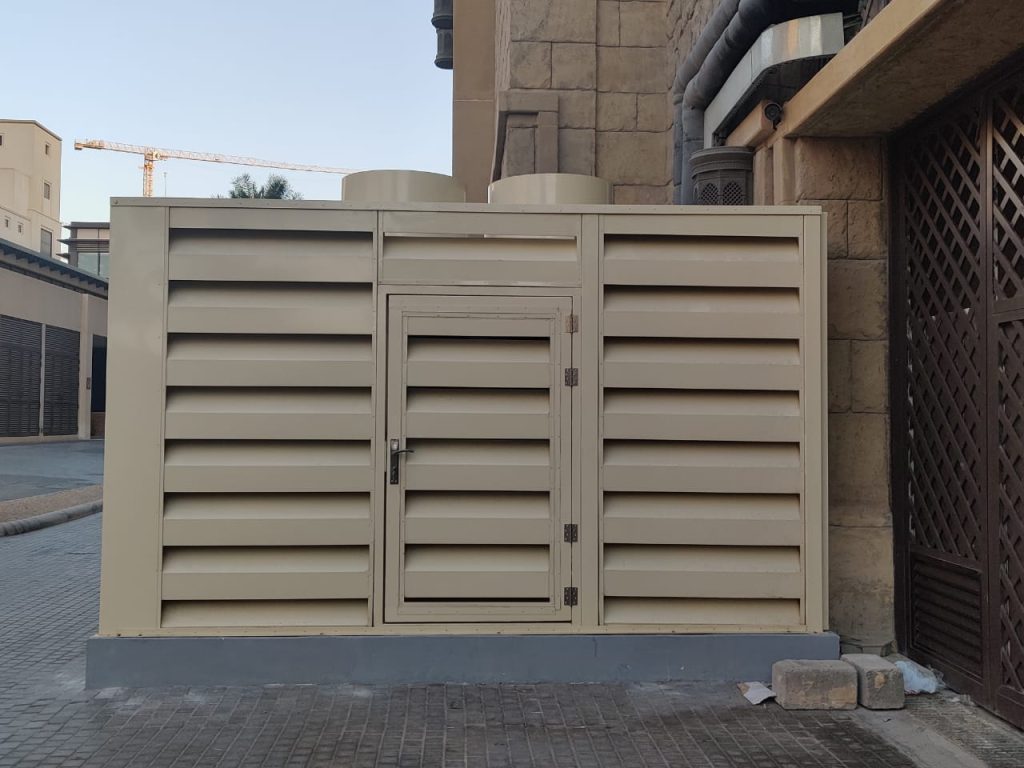
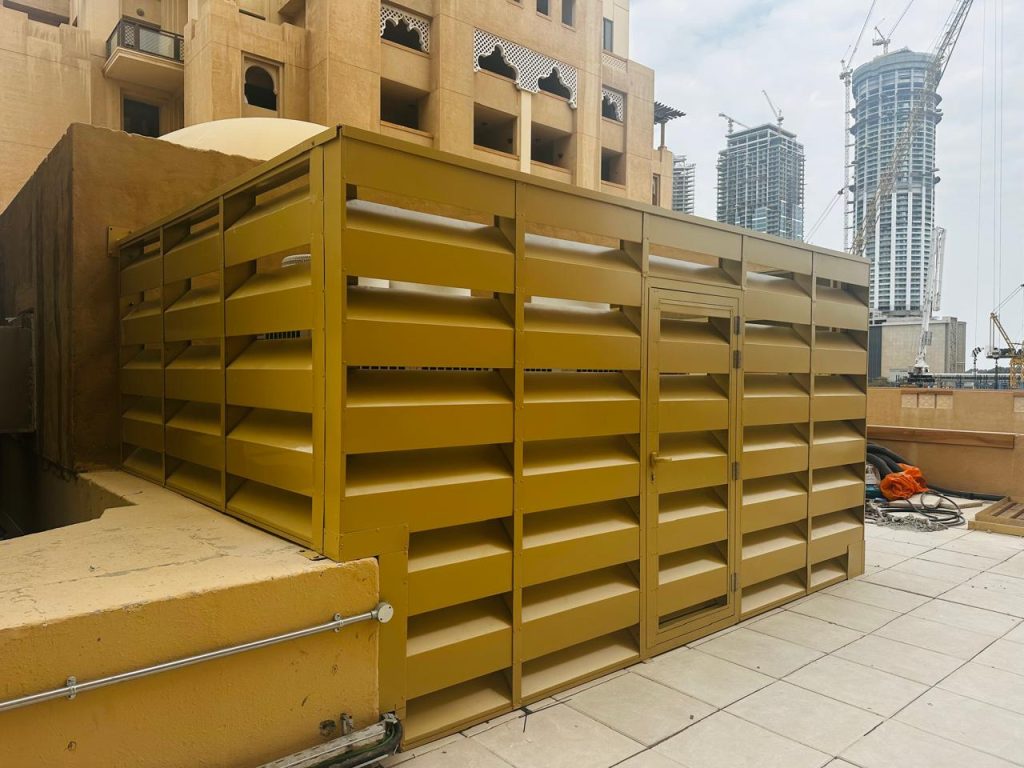
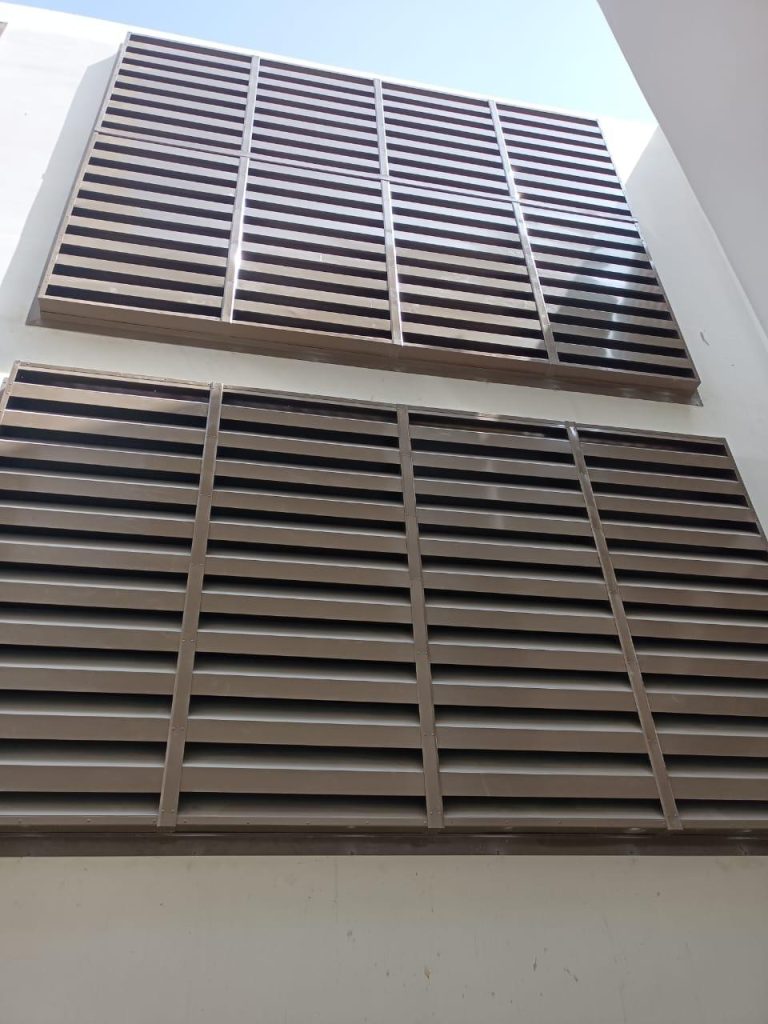
What Happens Without Acoustic Louvers?
Without proper acoustic treatment, such as acoustic louvers:
- Noise from mechanical rooms, generators, and ventilation systems can propagate into occupied spaces and the surrounding community.
- Sensitive environments—like hotel guest rooms, hospital wards, and nearby residences—may experience chronic noise exposure, leading to complaints, health issues, and potential legal action(5)(6).
- Building owners may face increased costs from retrofits, energy inefficiency (if windows must remain closed), and reputational damage.
Noise pollution from building ventilation and mechanical systems is a well-documented challenge with significant impacts on health, comfort, and compliance. Acoustic louvers represent a scientifically supported, practical solution for balancing airflow needs with effective noise control in industrial, commercial, and hospitality settings. Their use is essential for protecting both building occupants and the wider community.
Why Choose Kinetics for Acoustic Louvers?
At Kinetics, we not only supply high-performance acoustic louvers—we also fabricate them locally at our Kinetics Metal Construction Industries Company in Umm Al Quwain. This enables us to offer:
- Custom-engineered solutions tailored to your specific project requirements, whether for industrial buildings, hotels, hospitals, or commercial complexes.
- Flexible manufacturing to accommodate various sizes, materials, and performance specifications.
- High quality assurance, with products designed to meet demanding acoustic and ventilation standards.
Our acoustic louvers are designed for maximum sound reduction while maintaining necessary airflow, making them ideal for applications such as generator room intakes and exhausts, mechanical equipment screens, and pump room ventilation (3)(4). By choosing Kinetics, you benefit from local expertise, reliable delivery, and solutions that are engineered for the unique needs of projects in the UAE and the MENA region.
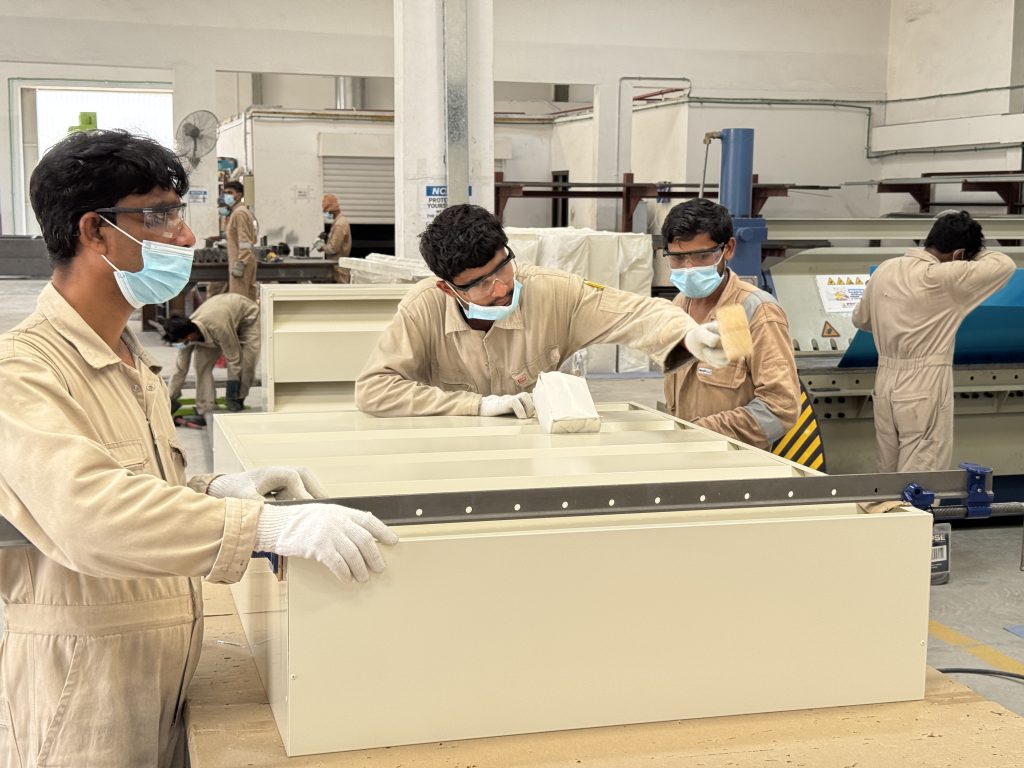
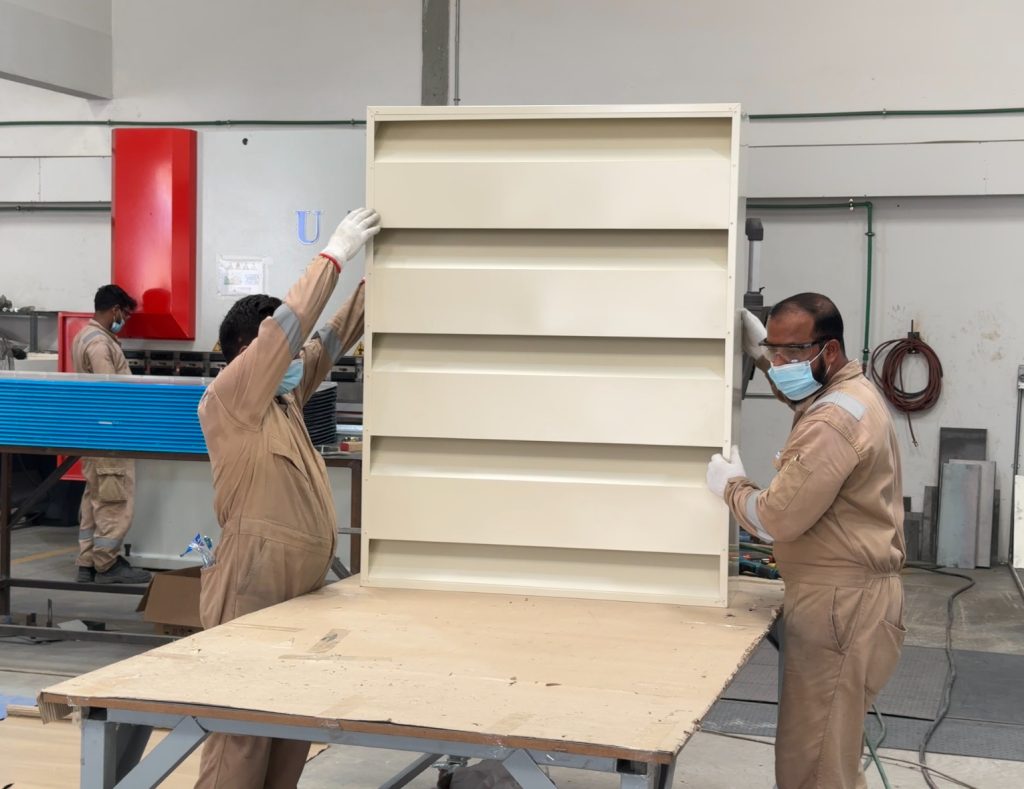

References
(1) De Salis, M.H.F., et al. “Noise control strategies for naturally ventilated buildings.” Building and Environment, Elsevier.
(2) Zhang, Y., et al. “Experimental study on noise reduction and ventilation performances.” Building and Environment, Elsevier.
(3) https://kineticsgroup.ae/product/acoustical-louvers/
(4) https://kineticsgroup.ae
(5) Abramkina, D. “Noise from mechanical ventilation systems in residential buildings.” E3S Web of Conferences (Moscow State University of Civil Engineering).
(6) Jachimowicz, J., et al. “Analysis of Noise in Education Buildings.” Journal of Ecological Engineering.
(7) Wong, N.H., et al. “A Review on Natural Ventilation-enabling Façade Noise Control Devices.” Applied Sciences (MDPI).


